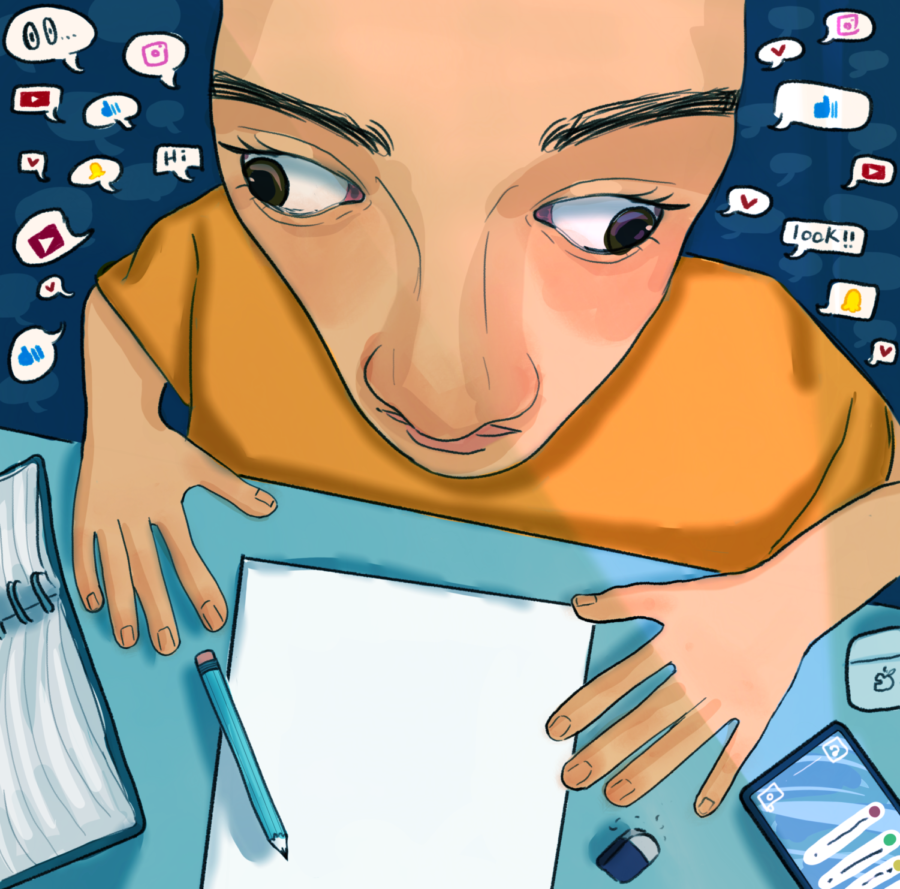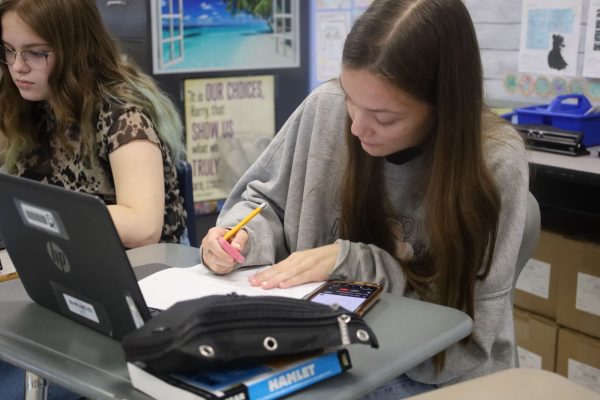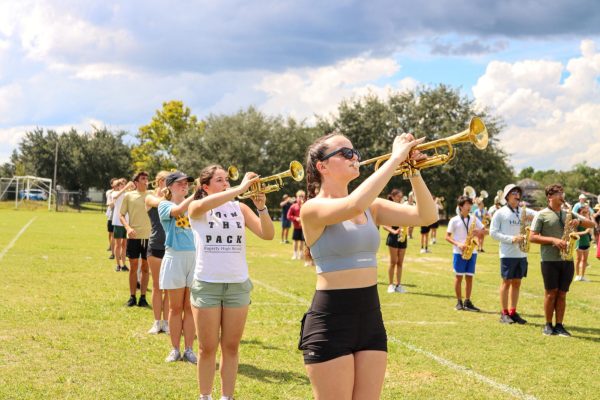15 seconds too long
Student’s experience may have a similar root for distractions, but each experience and solution is unique to their own situation
photo by Marcela Carrasco
Although social media discussion usually lies within the effect of mental health, there are underlying issues that are not always addressed. The decrease in attention span is alarming and affecting students in many ways.
You have to watch a video and answer some questions for an assignment, but you let it play while also scrolling through your Instagram feed. After the first time through, you are missing answers for several questions, so you play the video again… while checking your social media. Three hours later, the 40-minute assignment still isn’t done.
Although most social media discussions focus on a teen’s self-esteem, depression and anxiety, the loss of attention span is another major effect. Social media posts take between 15 seconds to one minute to view, and for teens, paying attention longer than that is getting harder. Reports have pointed out that 50% of social media users find longer videos too “stressful.” This decrease in attention span can lead to an increase in stress, performance errors and academic setbacks.
Senior Grace Elliott has struggled with managing her social media use since she was in middle school. Elliott got her first phone in fifth grade, and after realizing many of her friends were getting social media, she decided to get it too. Soon, Elliott started noticing social media had become a big distraction for her, and it only worsened during lockdown.
“During COVID, I decided to stay remote. And that was the worst decision because I just chose to be on my phone during class. That got me behind a lot and I just couldn’t catch up,” Elliott said. “I was online, but that was my only excuse. I was literally on my phone the entire time during class not listening to anyone.”
Eliott recently moved from Connecticut, so social media has become the only way to keep in contact with friends. She finds herself scrolling through various social media apps to stay in contact and often has trouble managing her phone usage.
“When everyone is using their little devices, I want to do it too and I feel like that started the habit,” Elliott said.
Elliott is hardly alone. Senior Grace White has also found herself on her phone constantly, keeping up with many contacts she started during the pandemic.
“When I was in middle school, there was a lot of social media, but I wasn’t that into it until freshman year. That’s when I started following a ton of people back because I had a lot more classes and friends,” White said. “After COVID, it was keeping up with all of them. And then my [phone usage] just took off from there. Now I constantly look to scroll through anything to keep my mind going.”
White believes that her phone usage has to do with the little sparks of dopamine people experience when they hear a notification, see likes or comments from their peers.
“It just makes you have that momentary feeling of gratification,” White said. “That is why people keep going back to social media—they want to feel that momentary pleasure.”
White has noticed that she needs to constantly be on her phone, even when watching a movie or doing homework. She especially struggles with long texts for her psychology and macroeconomics classes, usually diverting her gaze towards her phone.
In the last few months, various social media platforms have adopted this short-video format, with Instagram introducing “reels” and Snapchat adding a “spotlight.”
This reduction of attention is not exclusively set on school work. Sophomore Valeria Romero has found herself getting distracted even when watching videos or shows.
“I can’t really watch TV without pausing and wanting to go on my phone because my attention span just got so bad,” Romero said. “I’m on my phone out of nowhere.”
Senior Tiffany Odimegwu experiences similar problems with keeping focus, especially when there are tasks that she does not feel engaged by.
“When I am doing homework and studying things I don’t really want to do, I end up going on my phone more often and just scrolling to avoid doing the assignment,” Odimegwu said.
Although shortening attention spans have become common, staying focused is not a lost hope. These students have found several ways to deal with their social media distractions. Romero uses noise-canceling headphones and puts her phone in another room when doing homework, Odimegwu sets locks on her social media apps and Elliott makes sure she is active and productive throughout the day.
“I’ve done a seven-day social media fast,” White said. “It was really enlightening, because you realize how much we rely on [social media].”
For this social media break White deleted both Instagram and Snapchat as a challenge brought forth by her church. During those seven days White focused heavily on spending time with family, going outside more frequently, and doing school work. Although that break was fulfilling for her, she does not believe she could be capable of doing it again, especially with the amount of people she wants to keep in touch with.
“I re-downloaded Snapchat since I use the app to keep up with friends, but I didn’t get Instagram back until two years later,” White said. “I liked the way I felt without [social media], I didn’t have to worry about how addicting it had become.”
These are not the only alternatives for students, other alternatives include turning off notifications, setting a phone usage schedule or even deleting apps completely.
“There are many ways students can start managing their screen time, the only thing they need is their own motivation,” Elliott said.
Your donation will support the student journalists of Hagerty High School. We are an ad-free publication, and your contribution helps us publish six issues of the BluePrint and cover our annual website hosting costs. Thank you so much!








